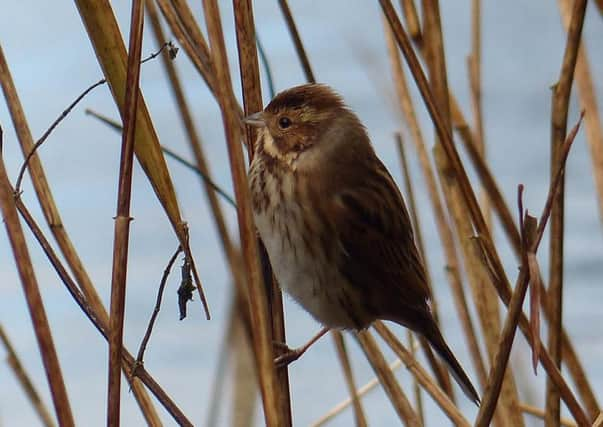Country & Coast: Biggest wildlife survey in the world will make you twitch


I’ll console myself with the bleak thought that perhaps it is one wetland species we can all anticipate as a garden visitor a few years down the line if the heavy rain continues.
Seriously, though, most of us who live in suburbs or in the country can expect to record no more than about 40 or so different species of birds through the year, starting with the usual suspects like the robin, blackbird, blue tit and starling. But the good news from the survey is that some gardens can produce surprising results like reed buntings and moorhens, depending on their proximity to water.
Advertisement
Hide AdAdvertisement
Hide AdThe survey is a snapshot of observations made on the last weekend of January, and so those who look out of their kitchen windows and see birds like the rare black redstart - another tick in 2015 from East Yorkshire - perform the birdwatching equivalent of winning the lottery. Other people whose gardens back onto farmland may well find they’ve got grey partridges, common buzzards and even little owls to record on their survey forms.
In North Yorkshire, almost three per cent of gardens had yellowhammers as visitors, an encouraging sign given that the once common rural bird’s population has plummeted.
There is no wildlife survey in the world as big as the Big Garden Birdwatch, which the RSPB began co-ordinating in 1979. Last year over half a million people signed up to become amateur ornithologists, counting a total of 73 different species and 8,546,845 individual birds.
The blackbird was the most widely spotted and appeared in over 90 per cent of gardens, while the robin increased its presence by going up from number ten in the 2014 list to number seven a year ago.
Advertisement
Hide AdAdvertisement
Hide AdAlso encouraging was the growing number of wrens, seen by twice as many people last year compared to 2014. It was the highest number recorded in Britain for almost a decade.
The most abundant bird was the house sparrow, which is a heartening sign given its well publicised decline due to a scarcity of suitable nesting sites on modern, well-maintained houses.
It wasn’t all good news, however, because the number crunchers flagged up the decline of what used to be two of our commonest garden species.
Last year, sightings of song thrushes continued to go down, and although it was once among the top ten it’s currently 22 in the list. Also, the greenfinch had dropped dramatically to number 25 in the rankings due to a disease called trichomonosis which is spread by a parasite and seems to target greenfinches in particular.
If my garden is any guide, this year these beautiful though quarrelsome birds will have seen a further decline.
To participate in the Big Garden Birdwatch 2016 visit www.rspb.org.uk